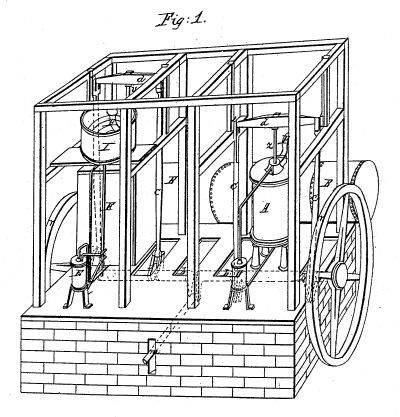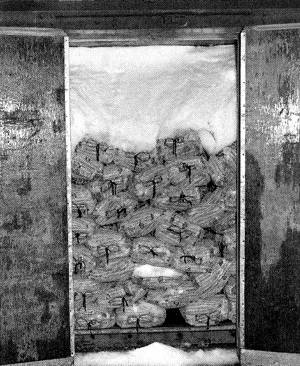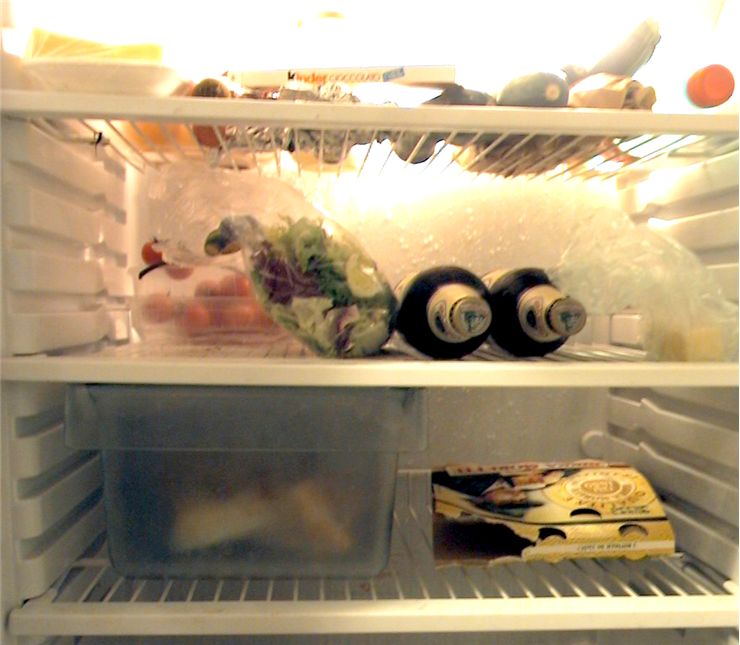History of Refrigerator – First Domestic Refrigerators
From the ancient times, we tried to preserve food by keeping it cold. At first we used ice harvested from rivers and lakes but then appeared refrigerators. They are household appliances that have a thermally insulated compartment and a heat pump which transfers heat from the inside of the fridge to the outside which makes the inside of the fridge colder.
Basis for refrigerator appeared in 1755 when Scottish professor William Cullen designed a small refrigerating machine. This machine had a pump and a container of diethyl ether. Pump made vacuum in the container which lowered the boiling point of the ether. Boiling ether absorbed the heat from the surrounding air. Next step in 1805 when American inventor Oliver Evans invented a closed vapor-compression refrigeration cycle again based on ether which had its boiling point lowered by vacuum. This ideas and prototypes were not practical until Jacob Perkins built the first working vapor-compression refrigeration system in the world in 1834. His system had closed cycle and could operate without waste. Although practical, it did not succeed commercially. American physician John Gorrie built a working prototype in 1842 and planned to use it for cooling the air in the tropical homes, but this one was also a commercial failure. James Harrison, a British journalist who had immigrated to Australia, built a mechanical ice-making machine in 1851 and made the first commercial ice-making machine in 1854. He patented it in 1856. This machine used ether, alcohol or ammonia while later models used ammonia dissolved in water, sulfur dioxide, and methyl chloride. These refrigerators were also used in breweries and meat packing houses.
Fred W. Wolf of Fort Wayne, Indiana invented in 1913 refrigerators for home and domestic use, that were generally a unit that was mounted on top of an ice box, and many other worked to improve the idea. Nathaniel B. Wales of Detroit, Michigan, introduced an idea for a refrigeration unit that worked on electric power in 1914. Alfred Mellowes made his variant of refrigerator with a compressor that was placed at the bottom of the cabinet in 1916. His idea was bought in 1918 by Frigidaire Company which started mass-producing refrigerators. In the same year, Kelvinator Company started producing their refrigerators, which were based on the Nathaniel B. Wales’ refrigerators, and were the first to have an automatic control of temperature. By 1923, they held 80 percent of the market for electric refrigerators.
In 1922, Baltzar von Platen and Carl Munters from Sweden invented a so-called absorption refrigerator which uses a heat source to provide the energy needed to drive the cooling system. These early refrigerators often had mechanical parts, motor and compressor, in the basement or an adjacent room while the cold box was located in the kitchen. The first self-contained unit that didn’t have this kind of concept but had all its parts in one enclosure was introduced in 1923 by Frigidaire.
The first more popular refrigerator that saw wider use was General Electric "Monitor-Top" refrigerator from 1927. Its name comes from the resemblance to the gun turret on the ironclad warship USS Monitor of the 1860s. They used sulfur dioxide or methyl formate as the refrigerating medium but these can be very dangerous and toxic if leaked so a safer solution was sought. In the late 1920s a research team was formed by Charles Franklin Kettering in General Motors to find a replacement. They found that Freon is much safer although not entirely risk-free.
More efficient refrigerators were developed in the 1970s and 1980s. Today it is known that Freon can cause ozone depletion in atmosphere.



